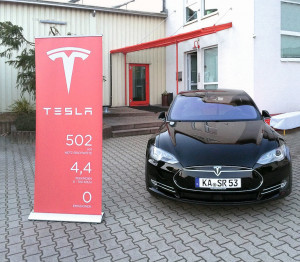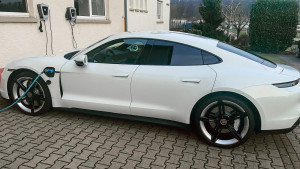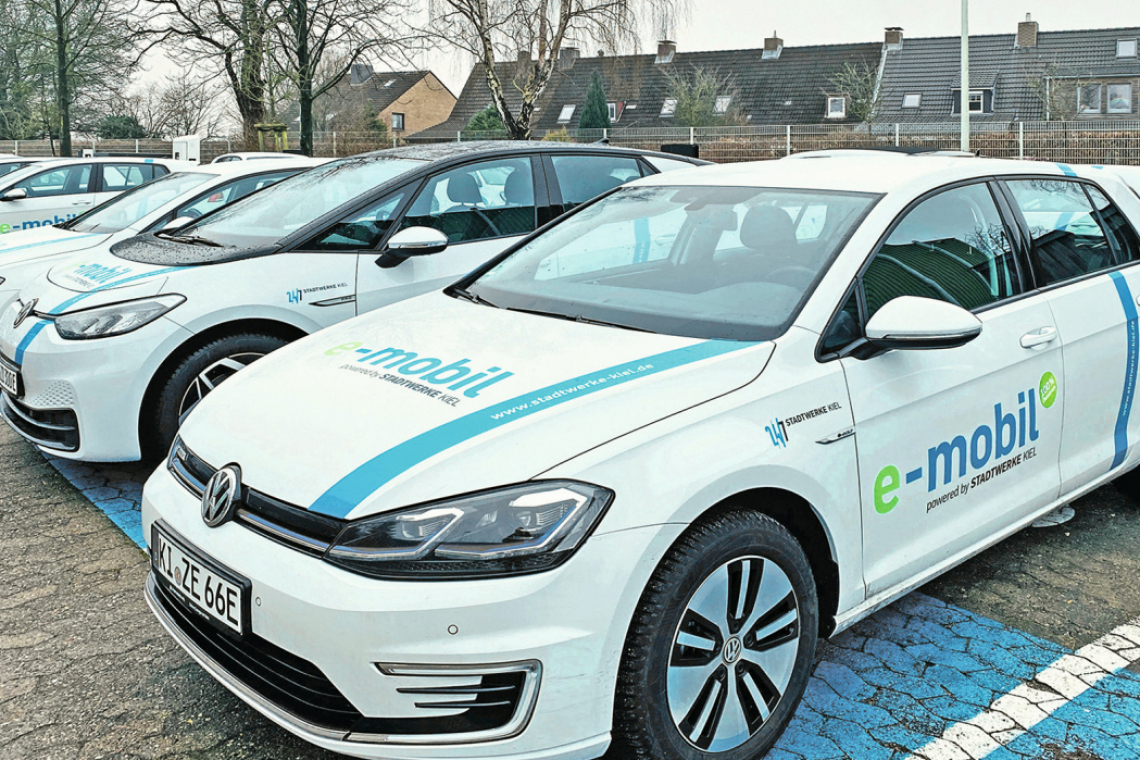In order for industrial companies to reduceCO2 emissions and ultimately become climate-neutral, many measures are required, many of which have appeared in this energy-saving series. One of these is the replacement of combustion-powered fleets and company cars with battery-powered vehicles. This is because company vehicles are included in the carbon footprint under Scope 1. Sven Reimold, expert in metal finishing, author of our series and pioneer of electromobility, has already taken this step. He has been driving fully electric since 2011. Reimold had to try out Tesla's vision and was one of the first to buy a Tesla Model S. An e-car that was already unparalleled at the time and, according to Reimold, had already left the German automotive industry behind twelve years ago.
10 mistakes with electric cars - from buying to charging
At Strähle Galvanik GmbH in Zaisenhausen, a charging station was installed very early on, just one year after the purchase of the electric car. At the time, it was part of a subsidized charging infrastructure. Car, charging station, billing system.
The fleet currently includes a Taycan, an ID4 and an I4 from BMW The electric version is also a great option for the field service. The charging time is no longer a disadvantage thanks to fast chargers and a company car tax rate of 0.25% applies (60,000 euro gross list). When buying, it is important that the car can be charged quickly, even before the range. It should be 150 to 220 kW, then you can usually charge the battery from 5 to 80 % in 30 minutes. SvenReimold's company car: a Tesla Model S
SvenReimold's company car: a Tesla Model S
Mistake no. 1: Always give 100%
With a combustion engine, it's usually quite simple: drive to the filling station and fill up once. Please do that. But with electric cars, you should only do this in exceptional cases. This is because the battery feels most comfortable between 20 and 80 %. With a charge level of 80 %, most everyday journeys can be covered. The electric car should only be fully charged before longer journeys.
Mistake no. 2: Running the battery down properly
The other extreme is also poison for the battery. Namely, when the charge drops to 0 percent (or almost reaches that level). Modern electric cars usually warn you in good time when a critical charge level or even a deep discharge is imminent. Many will also show you the quickest route to the nearest charging station.
Mistake no. 3: Often driving with a lead foot
As with combustion engines, the consumption of electric cars also increases enormously when you are driving at very high speeds. The same applies to heavy acceleration. The range then suffers as a result. To drive as efficiently as possible, a maximum speed of 130 km/h is sufficient. Many e-models are automatically cut off at 160 to 180 km/h. Recuperation is also part of the economical driving style of an electric car. As soon as you take your foot off the gas pedal, energy can be recovered from the kinetic energy of the rolling vehicle. Eco modes can also save energy while driving.
Mistake no. 4: Not maintaining charging accessories
Dirt and corroded areas on a charging plug not only look unattractive, they can also have a negative impact on charging performance. In addition, dirty plugs pose a fire hazard and moisture can lead to short circuits and electric shocks. Keep your charging equipment clean and make sure that the dust cap is fitted. Hang the plug so that it points downwards to allow water to drain away. Tarnish can often be removed with contact spray. A fairly common cause at Direct Current (DC) charging stations where the cable is attached to the station: The charging cable pulls the plug down so that it does not make sufficient contact with the electric car. This disrupts communication between the car and the charging station.
Mistake no. 5: Estimating the range incorrectly
On a longer car journey, the distance to the destination often exceeds the range of the electric car in question. Many factors are taken into account when determining the individual range - for example, personal driving style or the topographical conditions of the route. The information provided by the manufacturer therefore sometimes deviates significantly from the actual range. If you correctly estimate and plan the number of stops you need to make, your journey will be much more relaxed.
Mistake no. 6: Unprepared at the charging station
In principle, charging at a charging station is intuitive and uncomplicated. However, a few preparations are necessary before charging an electric car for the first time: In most cases, a charging card or a charging app is required for the payment process. However, alternative payment methods are also sometimes available.
Mistake no. 7: Charging when the battery is high
Premature charging when the battery level is still high is also not recommended: when the charge level is around 80 percent, the charging speed drops drastically in some cases. In fact, charging takes up to 100 percent longer in this case. In terms of charging performance, it is therefore recommended that the battery level is below 80% before going to the charging station. At Strähle Galvanik, there is a charging station that is supplied with its own renewable electricity
At Strähle Galvanik, there is a charging station that is supplied with its own renewable electricity
Mistake no. 8: Going to the wrong workshop
Electric cars also need to go to the workshop regularly, whether for maintenance or repairs. You should only visit qualified workshops that are familiar with the special features of electric cars and are trained to do so.
Mistake no. 9: Cleaning the engine compartment with water
Most of us like to see our car sparkling clean. And even those who drive an electric car regularly visit the car wash. This is usually not a problem. The only thing you really shouldn't do with electric motors is wash the engine (it's usually forbidden at filling stations anyway, especially because of the oils and coolants from combustion engines). This is because water can find even the smallest crack and cause a short circuit that paralyzes everything.
Mistake no. 10: Not having the right charging tariff
The tariff and price structure of the various charging station operators can sometimes be quite confusing. One of the biggest cost traps is roaming, when you (have to) charge with a provider other than your own. With a charging card from an electricity provider or car brand, you are on the safe side: you can charge at more than 500,000 charging points at standardized and fair prices; in addition to Germany, the networks include charging options in 16 other European countries. And you can pay conveniently by charging card or app; different charging cards are not necessary.
Advantages: Electricity storage for charging
We have already written about electricity storage in part 4 of our series. Especially in connection with photovoltaics and electric cars in combination with bidirectional charging, an electricity storage system is of course highly interesting. Not only could the PV electricity be buffered, but the car battery could also be integrated at the same time. Of course, this again requires a highly intelligent control system that manages everything together. An energy manager can then also be programmed in terms of time.
Bidirectional charging
We have been involved in the Bidirectional Charging (Biflex Vehicle to Industry) funding project since 2023. The project aims to create the possibility of using the car battery to cap power peaks. For example, if a lot of electricity is drawn during operation, it can be fed from the battery into the domestic grid for a short time. When power consumption returns to normal, the battery can be recharged from the domestic grid. However, not all car manufacturers provide these functions. The crux of the matter is that electric cars are usually on the road during the day. This means that the storage system is not available when it is needed.
Cost overview
E-cars such as the Volkswagen ID 5 or the Tesla Model 3 cost 50,000 euros. Advantage: A purely electric company car costing less than 60,000 euros only has to be taxed at 0.25%. That is a cost of 125 euros compared to 500 euros for a vehicle with a conventional drive.
Charging costs
For 100 kilometers at an average of 21 kWh/100 km, you currently pay 7.56 euros. With an electricity card from an electricity provider, the price is always the same everywhere, namely 0.36 euros/kWh. For 100 km of diesel with an average of 5 liters per 100 km of 1.76 euros/liter, the price is 8.80 euros. Unfortunately, the subsidies for the purchase of a new electric car have expired. A small downer is the 300 euro greenhouse gas reduction
(GHG) premium per year that you can apply for.


